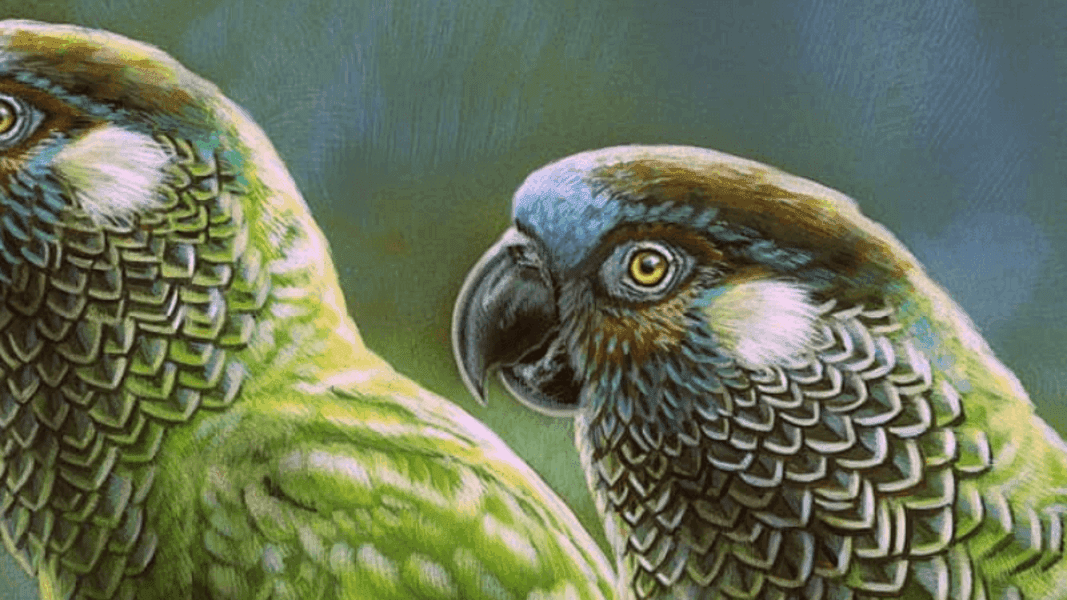Molly Bergen / 24 Feb 2021 / Sinú Parakeet
This week in northwestern Colombia, a team of researchers is searching for the Sinú Parakeet (Pyrrhura subandina), a species that has not been officially documented in more than 70 years. After decades of violent civil conflict, one of the many benefits of peace in Colombia has been the chance to discover if, after all these years, this endemic species remains hidden in the country's threatened yet under-explored forests.
Located on Colombia's Caribbean coast, most of the department of Córdoba is made up of lowlands under 330 feet (100 meters) in elevation. Named for the river that bisects the department, the Sinú Parakeet was last documented in 1949, in the dry forests of the country's foothills. Since then, cattle ranching, farming, and illegal logging have all taken a toll on this forest: “Ninety percent of the dry forest has disappeared,” according to Hugo Herrera Gomez, President of Sociedad Ornitológica de Córdoba.
Once believed a subspecies of the Painted Parakeet (Pyrrhura picta), the Sinú Parakeet was only recently recognized as a separate species, many decades after the last individual was seen alive. As a result, very little is known about its reproduction, nutritional requirements, ecology, or behavior. Moreover, Colombia's civil conflict (which officially ended with a 2016 peace deal between the government and FARC) disrupted research in the country's forests for decades, making it impossible to find out if the parakeet still inhabits them. Some local farmers have described seeing a bird with similar characteristics in recent years, but no hard evidence has surfaced proving that the bird has been found.
This expedition seeks to remedy that. “It's a species that is unique to the department, unique to the country, and unique to the world,” says Herrera Gomez. “Something has to be done to protect the species, if it is still out there.”
The expedition
In late February, a team of 14 biologists and local residents, including those who may have spotted the parakeet, will embark on a 10-day expedition to search for the bird, which is one of Global Wildlife Conservation's 25 “most wanted” lost species. The search, which Herrera Gomez calls “a dream come true,” is a collaboration between Sociedad Ornitológica de Córdoba, Asociación Calidris, and Colombia's national park authority, with support from Global Wildlife Conservation and American Bird Conservancy. Herrera Gomez also stresses that without the enthusiasm and support of the nearby communities, this expedition would not be possible. The local organizations supporting the expedition include Urra SA ESP, Vortex Colombia, Colombia Birding, Café de Cordoba, and Urabá Nature Tours.
The team will search the relatively well-preserved highland forest around Alto Sinú, where the last parakeet sightings were reported in 1949. While this area is known to be important habitat for other endemic and endangered birds, including the Blue-billed Curassow and the Chestnut-winged Chachalaca, there has never been a complete ornithological study conducted there, although there were expeditions mounted to search for the Sinú Parakeet between 2004 and 2005, by Fundación ProAves. In Alto Sinú, there is basically no recorded data from altitudes above 1,300 feet (400 meters). The researchers will split up into small groups and walk transects through the forest, noting the species they observe and listening for vocalizations. They will then upload the lists of avian species they record to eBird, a popular tool for scientists and birdwatchers that is managed by the Cornell Lab of Ornithology.
What will they find?
Herrera Gomez is optimistic that the team will find the Sinú Parakeet, citing other rare and “lost” parakeet species. In 1999, a group of researchers sponsored by American Bird Conservancy and Loro Parque Fundación found the rare Yellow-eared Parrot. Before its re-emergence, ornithologists were wondering if the species had been lost. Then, a decade after researchers found 81 of the parrots high in the Colombian Andes, a second population was found in foothill forests. The Perijá Parakeet and Indigo-winged Parrot were also both once lost to science. The Indigo-winged Parrot was rediscovered as recently as 2002 after decades of civil conflict prevented scientific surveys from being conducted. Herrera Gomez's bigger concern is that if the Sinú Parakeet still exists, its population is likely quite small, which will make it harder to find.
No matter what the expedition finds, it will undoubtedly be a step forward for science. “Because this area has not been well studied before, even if they don't find the parakeet, [they] will have lots of new info they can bring back from the field,” Herrera Gomez says. “Anything new will be interesting.”
